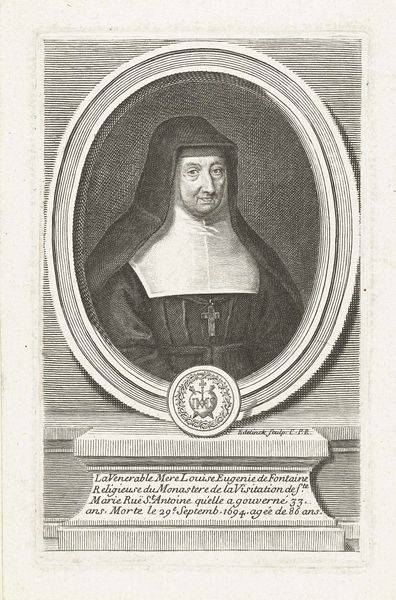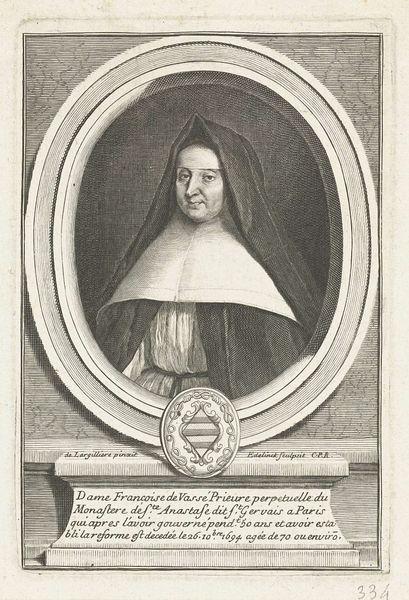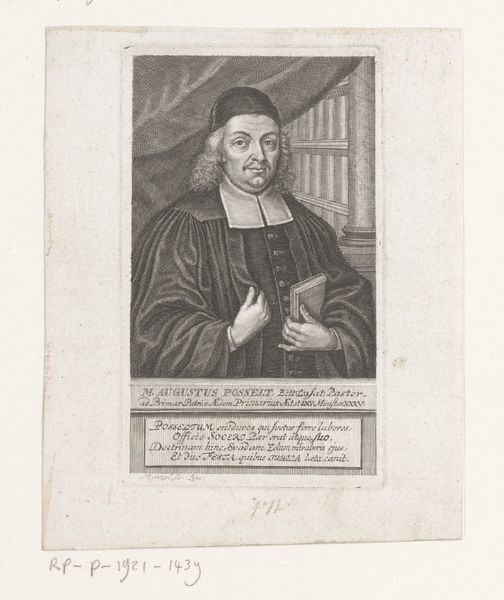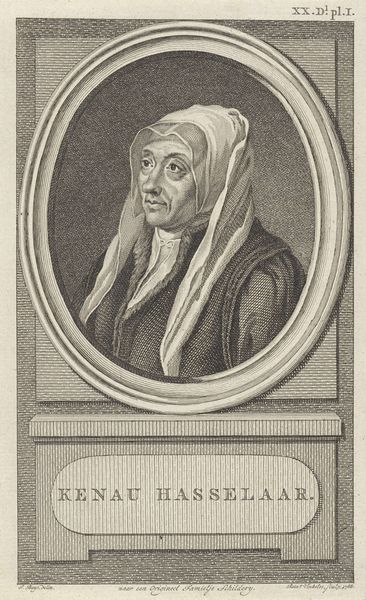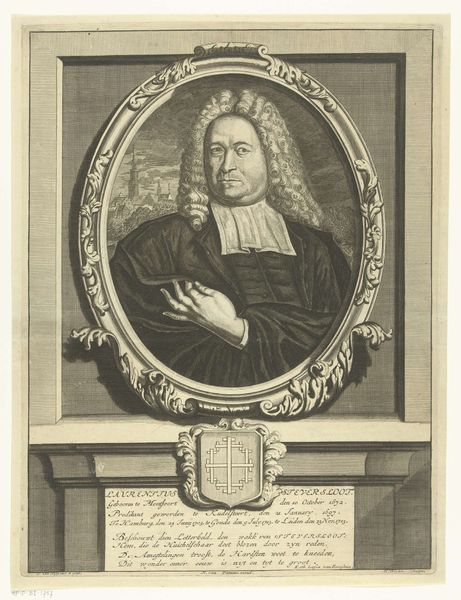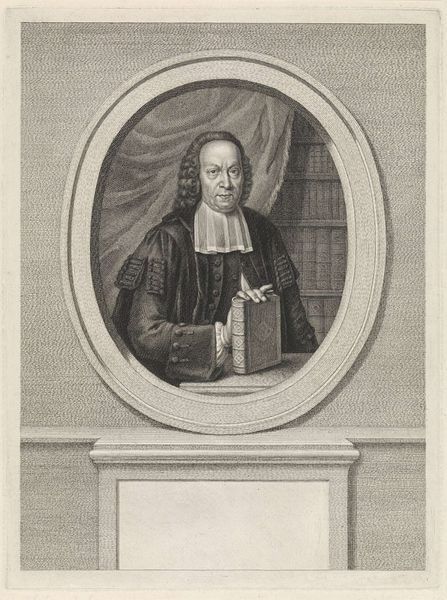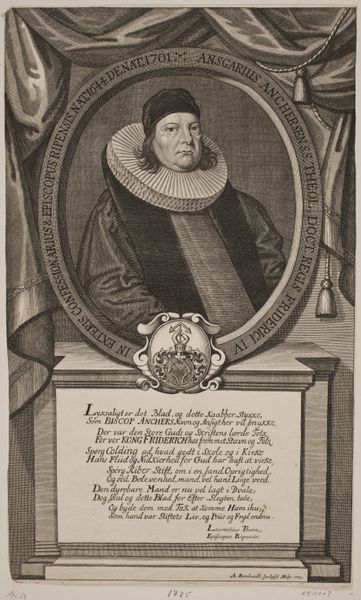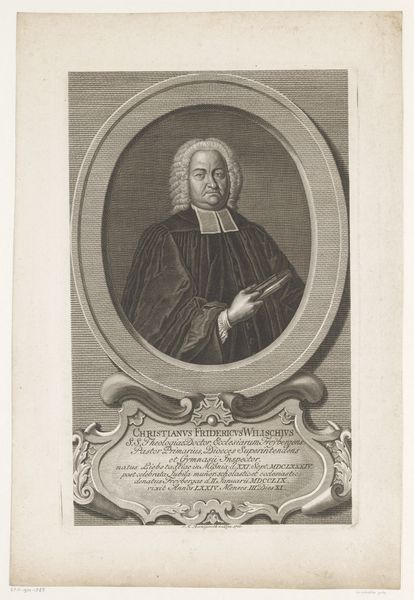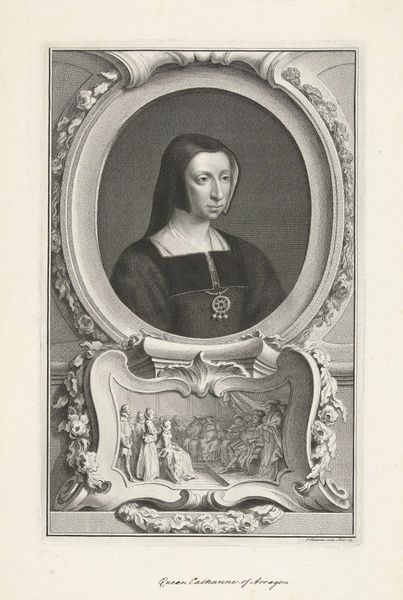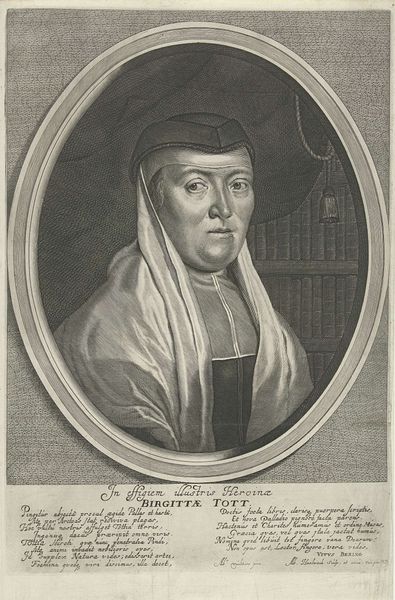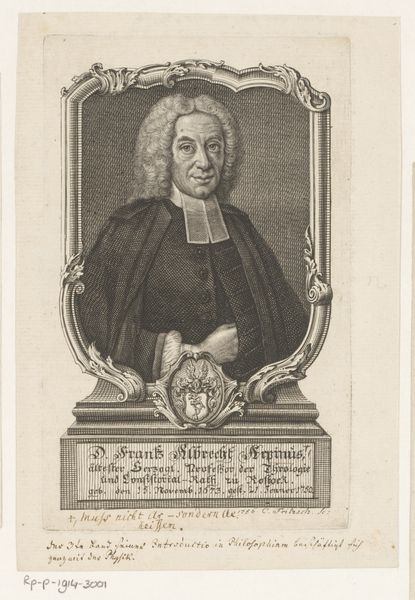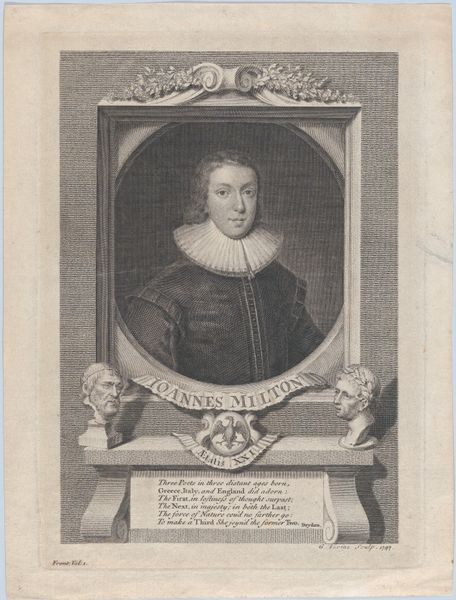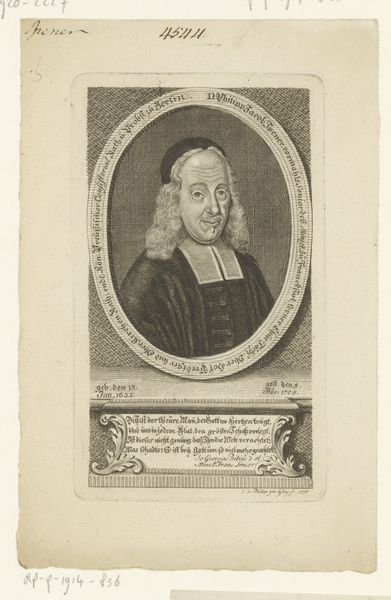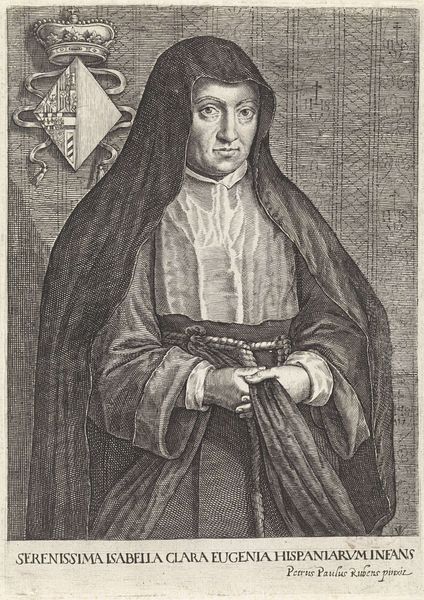
engraving
#
portrait
#
baroque
#
engraving
Dimensions: height 145 mm, width 92 mm
Copyright: Rijks Museum: Open Domain
Editor: Here we have Gérard Edelinck’s “Portrait of Florence de Werguignoeul,” created in 1694. It’s an engraving, and what strikes me is the formality of the portrait, even within its oval frame. What can you tell me about the image? Curator: This print provides a window into the institutional and social structures of 17th-century Europe. Engravings like this, widely distributed, solidified the Church's image and its leaders like Florence, who was an abbess. How does the inscription at the bottom, and its reference to "promotion" within the "Reforme," impact your interpretation? Editor: Well, knowing she was promoting reform does add a layer of understanding. It moves it beyond just being a straightforward depiction of a religious figure; it positions her within a specific, possibly contentious, movement. Curator: Precisely. Consider, too, the power dynamics inherent in portraiture. The choice of presenting Florence with a crucifix signifies not only her piety but also the authority invested in religious iconography. How does this image, reproduced for a broad audience, reinforce that authority? Editor: It almost acts as propaganda, showcasing her dedication and therefore legitimizing the reform movement she’s part of. The act of replication, by being more accessible to a wider range of audience members, makes it more potent than just one painting. Curator: Exactly. This points to how art participates in shaping public perception. By examining the context—the reform, the printing press, and the abbess's role—we reveal the engraving's broader cultural function. Editor: That makes me think about the relationship between art and power—how an image can solidify ideologies. I didn’t realize a simple engraving could have such a complex story. Curator: It demonstrates the profound interplay of artistic representation, historical context, and social power. Every artistic choice contributes to a narrative that reinforces existing structures.
Comments
No comments
Be the first to comment and join the conversation on the ultimate creative platform.
